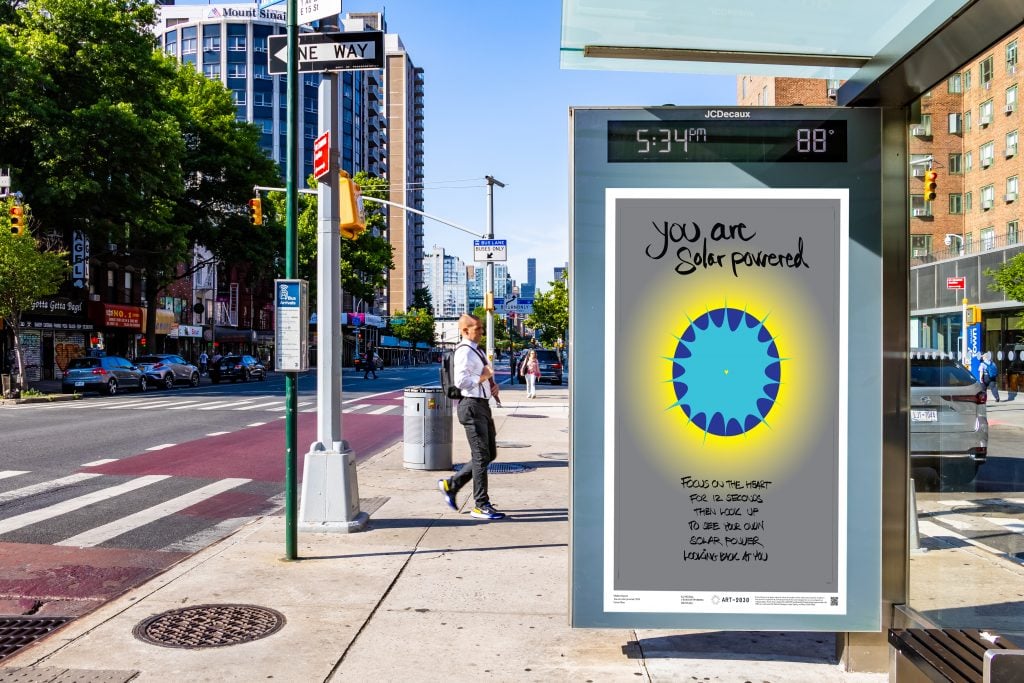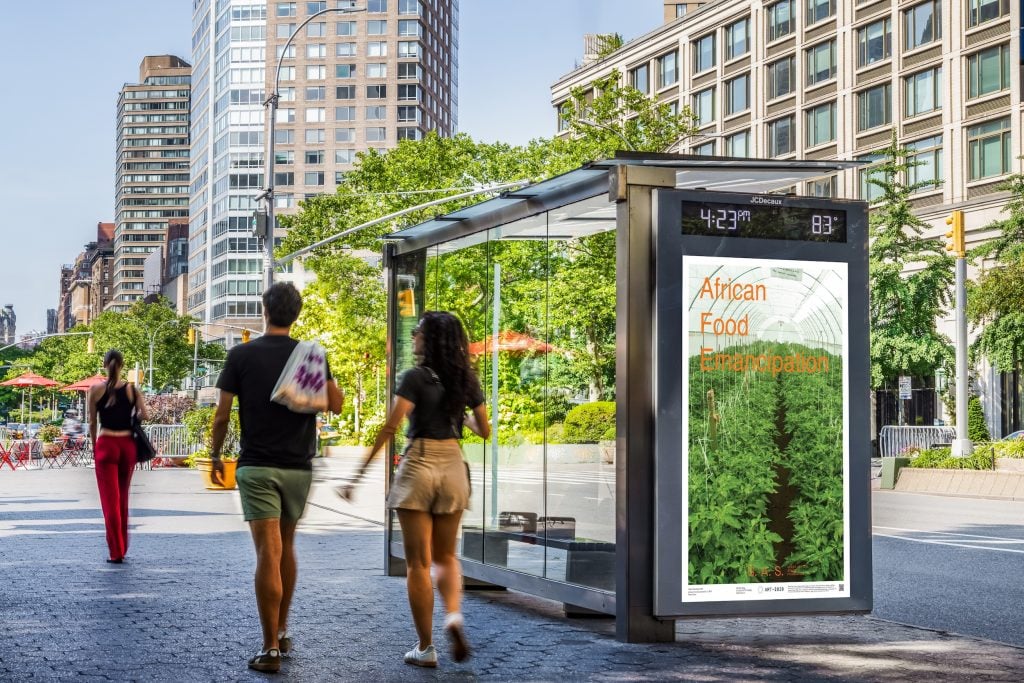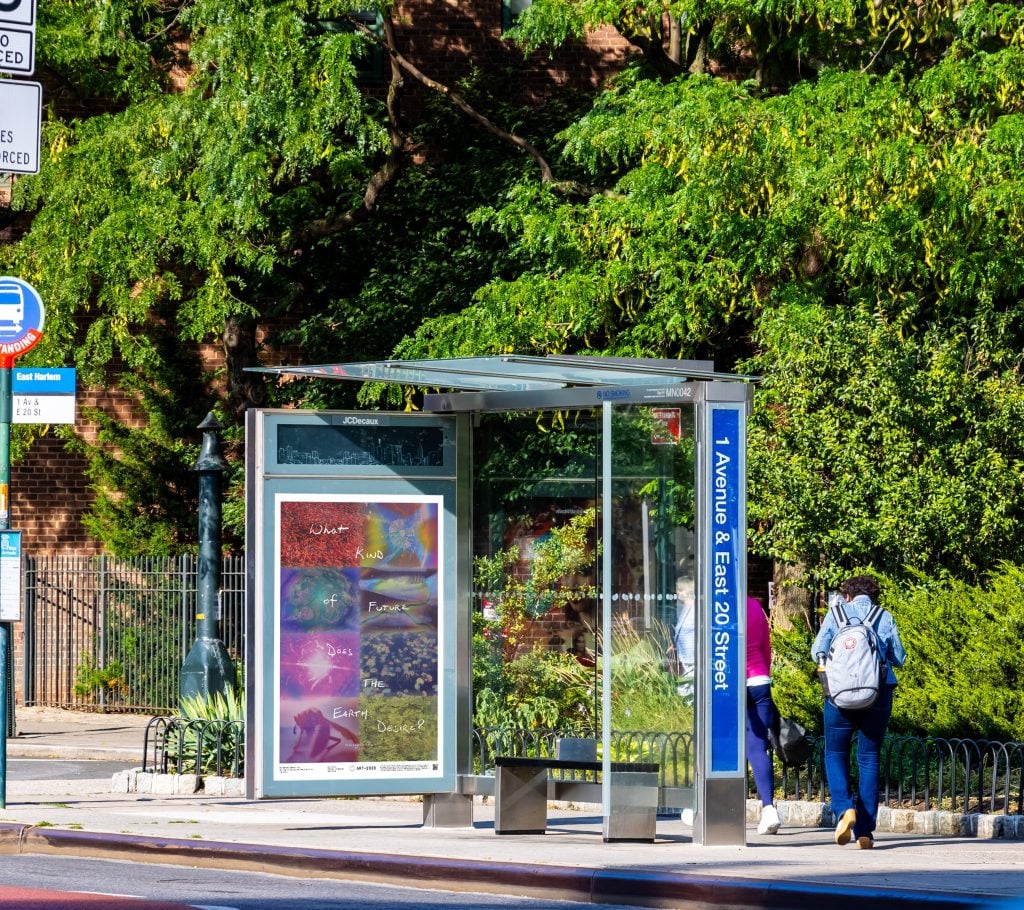Art & Exhibitions
Artworks on View During the UN General Assembly Challenge Diplomats—and You—to Imagine a Better Future
Stars like Maya Lin and Olafur Eliasson will show projects at the UN itself and on the city streets.

Stars like Maya Lin and Olafur Eliasson will show projects at the UN itself and on the city streets.

Brian Boucher

Diplomats attending the 79th United Nations General Assembly in New York next month will address an array of urgent crises: galloping climate change, war, economic inequality, and assaults on human rights. As attendees at the “Summit of the Future” undertake to save the world, a select group of artists will try to help them—and, simultaneously, the public throughout the city—to envision a better future.
Nearly two dozen artists and collectives will respond to the summit, which counts among its goals quality education for all, gender equality, and clean, affordable energy. Organized by the nonprofit Art 2030, the public display is dubbed Future Ours. In a gesture of equalizing boldface names with everyday citizens, it will place the same selection of advertising-style artworks both inside the UN headquarters and on hundreds of bus shelters throughout the city. After its New York run, it will expand its reach when it travels next year to Copenhagen’s Kunsthal Charlottenborg for the next edition of its biennale.
The global roster was determined by three guest curators—artist Patricia Domínguez, Serpentine Galleries artistic director Hans Ulrich Obrist, and independent curator and critic Jeppe Ugelvig. Among the contributors are the Congolese Plantation Workers Art League (CATPC), from the Democratic Republic of Congo; Danish-Icelandic artist Olafur Eliasson; American architect-designer Maya Lin and her What Is Missing? Foundation; Nigerian-Belgian artist Otobong Nkanga; India’s Raqs Media Collective; and British-Nigerian artist Yinka Shonibare CBE.

Yinka Shonibare CBE, African Food Sustainability II (2024), part of Future Ours, New York City, 2024. Courtesy of ART 2030 and JCDecaux.
Founded in 2016 by Copenhagen-based Danish curator, art advisor and cultural entrepreneur Luise Faurschou, Art 2030 facilitates art projects that complement the UN’s efforts and has previously worked with artists such as Yoko Ono, Tino Sehgal, and Superflex. Through both communal art-making projects and digital initiatives, said Faurschou, the organization has reached many millions.
“We all know the problems and the challenges,” said Faurschou in an interview, “but artists’ imagination is so critical. We can’t shape a future we can’t see.”
Some of the projects relate to initiatives the artists have taken elsewhere, such as Shonibare’s poster, which shows the interior of a greenhouse; his foundation in Nigeria involves a working farm. Eduardo Navarro’s project, showing him in a seal suit feeding orphan seals, links to his nascent organization FOCA, an acronym for Foundation for the Oceanic Contemplation of Affection (and the Spanish word for seal), which will invite artists to spend time with the ocean in Uruguay.

The Institute of Queer Ecology, What Kind of Future Does the Earth Desire? (2024), part of Future Ours, New York City, 2024. Courtesy of ART 2030 and JCDecaux.
Eliasson’s, on the other hand, takes place directly onsite, as it tells viewers, “You are solar powered,” and encourages them to focus on their heart and then look to the sun.
Lin’s poster offers a QR code linking to the website of her foundation, which offers information about nature-based solutions to climate change. The poster promises that we can reduce and offset annual climate emissions by as much as 90 percent while protecting and restoring biodiversity around the world.
“Future Ours seeks out visions for our planet’s future by leveraging the medium of the billboard,” said co-curators Patricia Domínguez, Hans Ulrich Obrist, and Jeppe Ugelvig in press materials. “In response to current social crises and ecological disasters, Future Ours disperses artistic enterprise into unexpected spaces to generate new encounters in the vast public realm of the commercial. The project is an invitation to rethink how art can help discussions about how it can aid us in rethinking what is or what could be ‘ours’ in futures worth fighting for.”
In Faurschou’s eyes, artists in urgent times should do anything but stay in their lane.
“We work this way because we truly believe in the transformative power of art,” said Faurschou. “Art is such an incredible space for reflection and discussion. We do this because we trust that art changes people—and people change the world.”
Future Ours is on view at the United Nations, 405 East 45th Street, from September 13 to 29, and on bus shelters throughout the city from September 16 to 29.